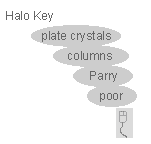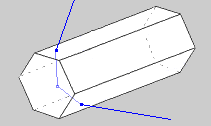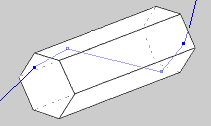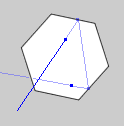| South Pole Halos - Zenith View |
|
||||||||||||||||||||||||||
|
|||||||||||||||||||||||||||||
|
|||||||||||||||||||||||||||||
 |

|
Another
view. |
Wegener arc Formed by singly oriented columns. Similar ray paths to upper tangent arc (to which it is itself tangential) except that there is an internal reflection from a prism end face. Rays enter a side face, reflect off an end face and then leave through another side face inclined at 60º to the first. The arc wraps around the circumscribed halo at high sun. |
 |
|
Subhelic arc Formed by singly oriented and Parry columns. Rays enter an end face, internally reflect off two side faces and leave the opposite end of the crystal. The net deviation as viewed from the end of the crystal is always 120º like rays forming the 120º parhelia. |
  |